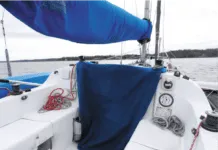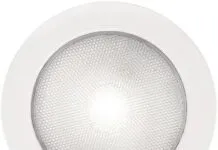Unfortunately, our recent boat show surveys and sea trials show that many emergency tiller designs are worse than the automotive industry’s idea of a spare tire. Those faced with a steering system failure at sea need an easy-to-install, efficient steering alternative. Many approaches to emergency steering have become more of an afterthought rather than a 24/7 ocean usable backup system. Ideally, we want hardware that solidly attaches to the rudder stock, offers enough leverage to easily affect rudder angle changes in all weather conditions, and situates the helmsperson in a safe place with good visibility.
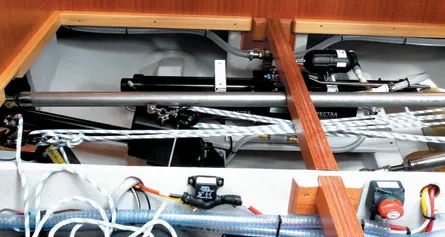
steering to a crowded compartment
located under the aft cabin berth makes boat handling difficult
for a helmsperson who can’t see where they are going.
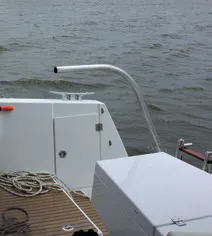
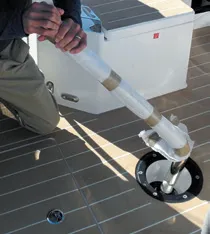
too little leverage, that in some cases
left the helmsperson with little or no visibility at all.

that the helmsperson, rather
than the vessel, are being steered.
As wind and wave action increases,
course control becomes a losing
battle. This wobbly T-fitting is misaligned
so that it rubs against the access hole. A T-type emergency
tillers can be efficient as long as the
person at the helm retains good visibility and some comfort. This setup meets the former criteria.
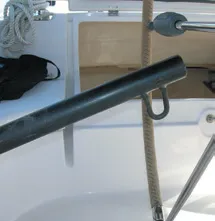
with winch handles to be available on a 24/7 basis. In many cases, a
short emergency tiller is mandated
due to cockpit tables, binnacles and running rigging that intrude on a longer tillers swing arc. Connection
points for lines to winches can add
more steering power but the tiller’s
connection to the head of the rudder
stock must be solid










